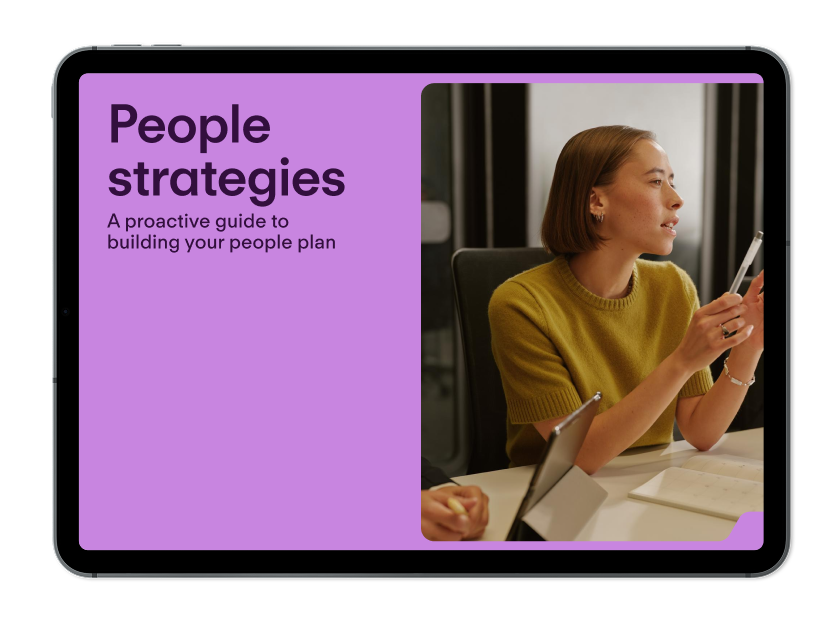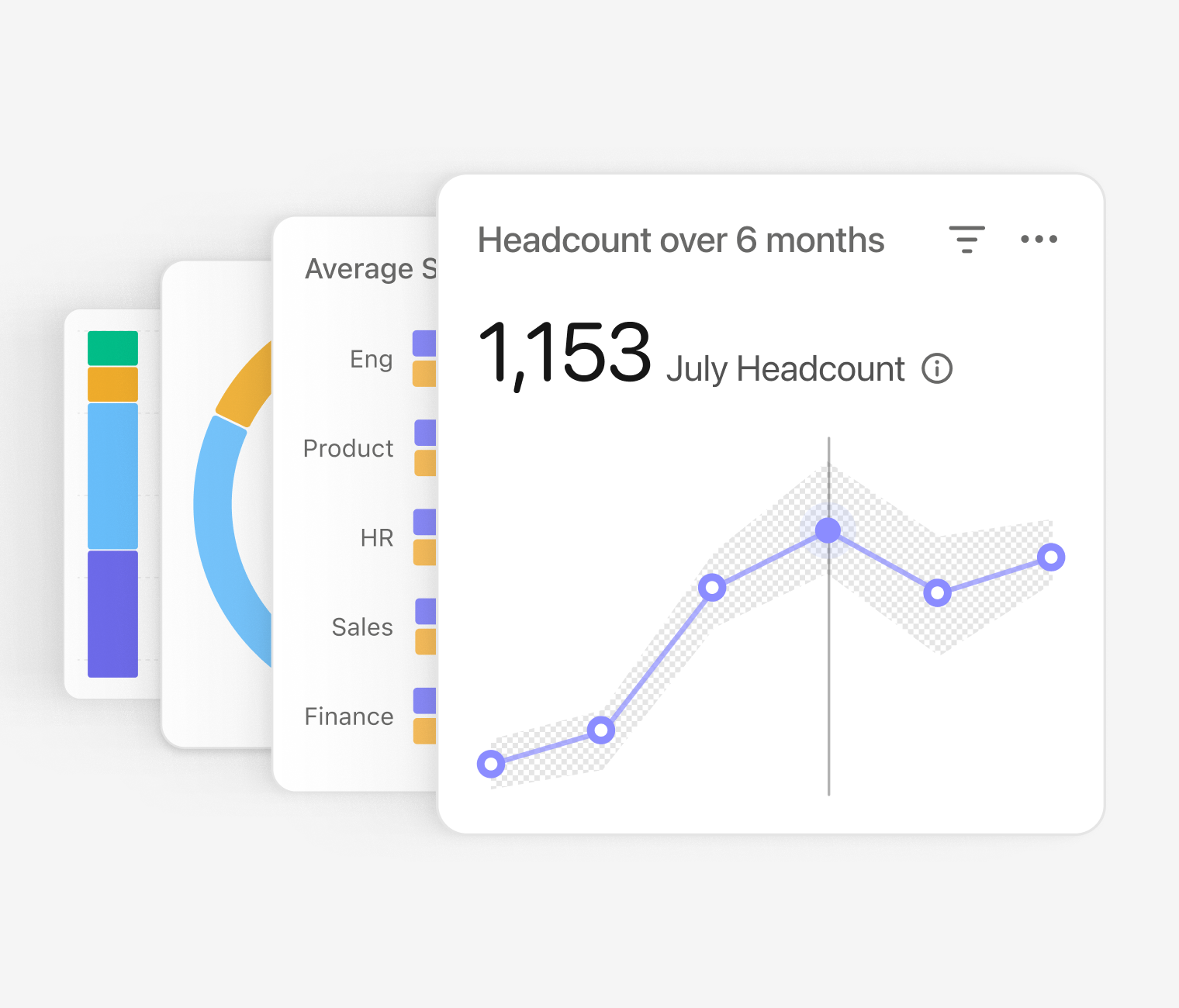
People Strategy Guidebook
A free guide to help power your next great people strategy.
Download our guide to developing your organization’s own people strategy today.16. July 2021
How People Teams Should Think About Hiring Cost

For teams and organisations looking to scale, one thing I always hone in on is understanding the hiring cost that comes about in the process of bringing candidates on board.
While it might be tempting to think about cost as purely a monetary metric, I think it’s more helpful for HR and People Teams to think about it as a more well-rounded concept.
So, how much does the wrong hire, or the wrong hiring process, cost your organisation? In this article, I’ll take you through cost as a KPI for your HR department. –Ross Seychell, Chief People Officer at Personio
Download Our Guide: Make the business case for the right HR solution
What’s The True Cost Of An Employee?
The fact is that everything costs something. It’s both an immutable fact of life, and a fact when it comes to all of your HR-related efforts and people processes.But, some costs are more apparent than others. They may be hidden, or harder to quantify, but that doesn’t make them any less impactful.
In my own work, I have found that the concept of cost has its deepest roots in balance. I like to think of it as the balance between cost and investment, the amount you pay in the moment and the amount you realise down the road.
In that sense, it’s a question (or equation) of quality, meaning that an aversion to cost (when we think of it as an investment) typically has a negative impact on quality. The two are always linked.When it comes to hiring, for instance, there is no sole metric that determines success. While we might ultimately look at the cost to hire, we also need to consider others, like:
Time to hire
Resources to hire
Application to offer rate
Offer to accept rate
Candidate experience metrics
And more…
As you can see, if you purely focus on cost as a purely monetary figure, you may end up compromising the quality of the process. If you invest less in hiring, though, it will almost certainly have an impact on quality.
This can have a long-lasting impact on your existing organisation, team, and employer brand. So we need to think of cost both as how much we put in, and how much we get out.
What Influence Does Process Have On Hiring Cost?
So, I just touched on this idea of cost being a more holistic figure rather than simply a financial figure. This leads me to my next point: understanding cost as a function of time.
Time, in this context, is akin to process. That means that, when it comes to something like hiring, we know the right process for your company takes time and it takes effort. From start to finish, we need to square both the cost of hiring an employee and the time it takes for our Talent Acquisition teams to help us get to that point.
At the same time, according to research from Glassdoor, the average interview process in the UK is around 27.5 days. So, how do you balance the natural tension between them?
Enable Data-Led Decisions

Collect and organise important HR insights such as absences, attrition, and more. Generate detailed reports in seconds so you can strategise with confidence.
Unlock detailed HR analyticsHow Is Your Team Investing In Candidate Experience?
If you have a shorter process, resulting in the same amount of hires, you can begin to depress the hiring cost per employee, but it may come at a cost of quality (as I mentioned before).
A good signal to look at here would be your applicant-to-offer ratio.This can help you see how many applicants turn into real offers. If you see this metric decrease, and not stabilise as your organisation scales, you may be wasting simply too much time (the inverse is also true — as it may signal a drop in quality).
This is all to say that cost matters, as does time. Especially for a growing organisation, you need to be able to balance both expertly.At Personio, we have taken distinct initiatives to help aid that balance, including:
We have implemented what we call ‘Bar Raiser’ interviews, interviewers from outside a potential hire’s department, to bring an objective view and solely look into their candidacy from a culture fit perspective. This helps keep our quality bar high.
Work is constantly being done with hiring managers to fully understand the profiles and job requirements necessary for a role. This way, we can filter out the wrong candidates quickly and not at a later stage (where we have invested too much time).
We help make time more effective by clearly outlining who candidates will meet in each individual interview step, and the main focus for each, so candidates come prepared.
Each of these initiatives is designed to both ensure we hire at the pace we need, without sacrificing quality. It still means investing some time and effort, but if you position it properly it can keep your balance in proper order.
Master the Art of Employer Branding

Attract and retain the best talent on the market with great employer branding. Learn more here with our free guide.
Start todayUltimately, we also take time to actively look at metrics that show our performance and effectiveness as a team. It’s important that we get to the bottom of understanding how efficiently we run our operational tasks, especially across our HR, Office IT, and Recruiting departments.
Keep ‘Opportunity Cost’ Top Of Mind
One way that I like to think about and approach cost as a KPI is rooted in the idea of ‘opportunity cost.’ As I mentioned before, cost is a bit of a balancing act, and this idea helps illustrate that act a bit clearer.
Think about the cost of making the wrong hiring decision in your organisation. Not only have you spent the money and time to hire, but you also need to think about the cost of a bad hire. According to another report from Glassdoor, it costs an employer 33% of a worker’s annual salary in order to hire a replacement if that worker leaves or is not a good fit.
So, you not only lose that person, but you lose the opportunity of having made the right decision in the first place. This reveals itself clearly in cost, but it’s really a signal towards better processes rather than trying to decrease or alter budgets.
Ultimately, that’s why it is so important that you have your sourcing, screening, and hiring processes performing at their best. Because the cost to replace is not simply doing things over, but missing out in the first place.
What Does Hiring Cost Come Down To?
On our team, we rely on Personio’s recruiting platform to craft a structured hiring process, with the data to match, to track how we are hiring while also reporting on those who are leaving our organisation in a short period of time.
This helps us not only understand how we can stabilise our applicant-to-offer ratio, but also understand if we are capitalising correctly on opportunity costs and how our hiring experience can end up recruiting exactly the right candidates.
To sum it all up, cost is not simply a figure you need to raise or lower. It has a lot of nuances, metrics powering it, and what you really need is a process to make sure you are keeping track of all of it. That way, you can make data-driven decisions much more easily.

About Ross Seychell
As a business leader with 20 years of HR experience, I have a strong passion for how a company’s most important asset – their people and culture – enables them to unlock and achieve their mission. After building out workplace strategies at high-growth companies such as Wise and King, I joined Personio as Chief People Officer to help us become the leading HR platform and tech employer in Europe.
The Business Case for HR Software

